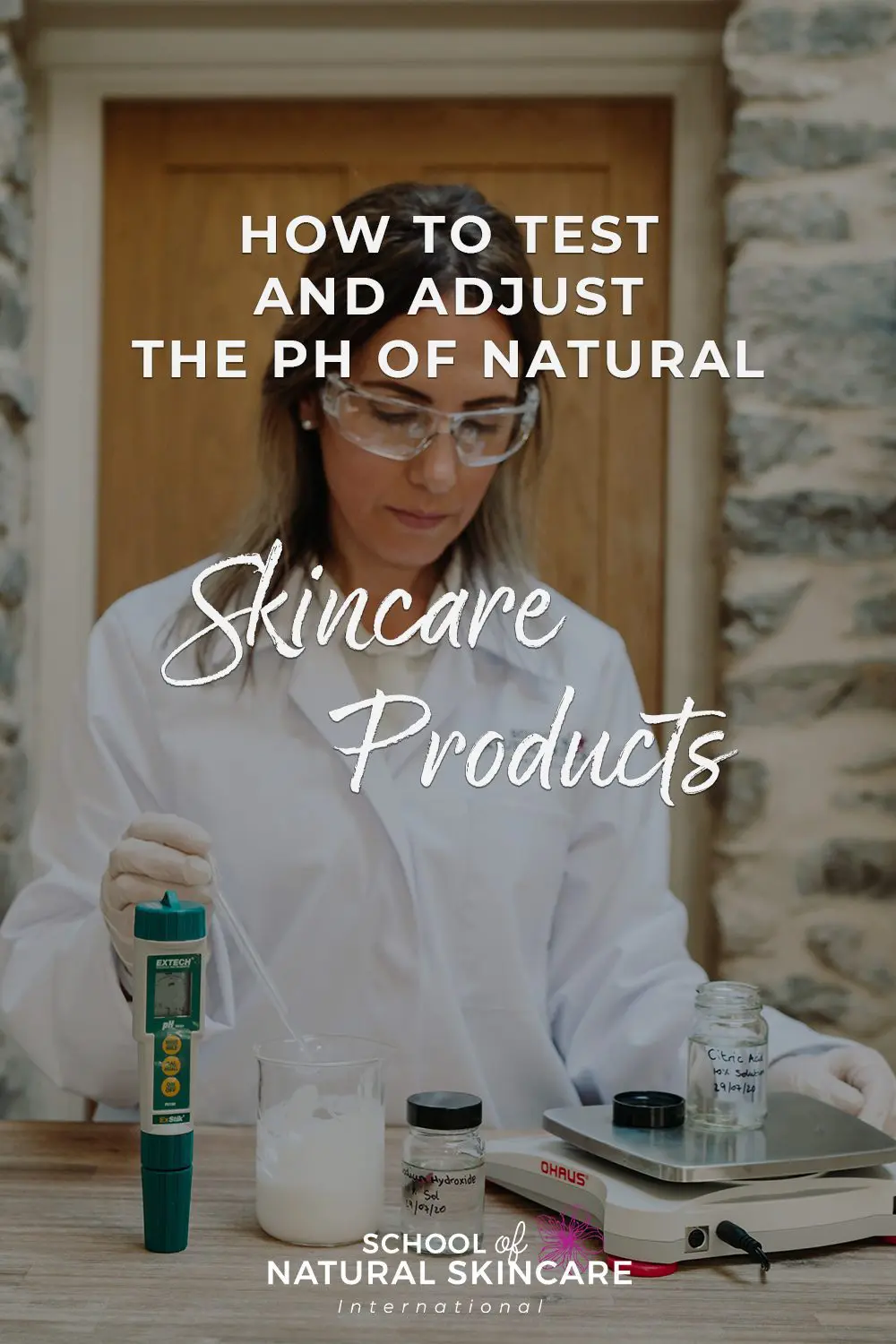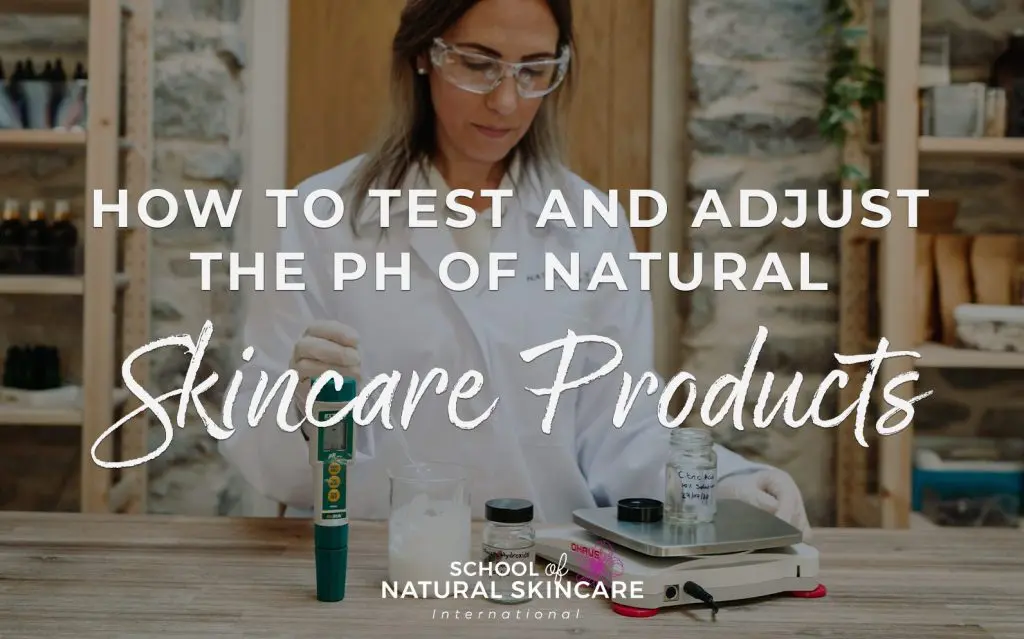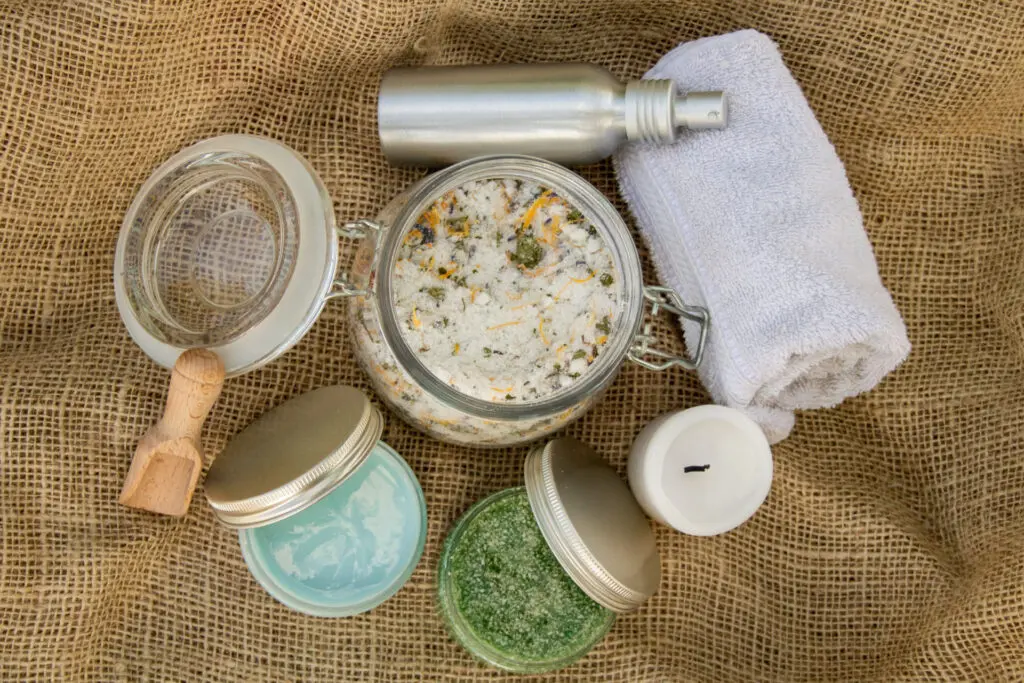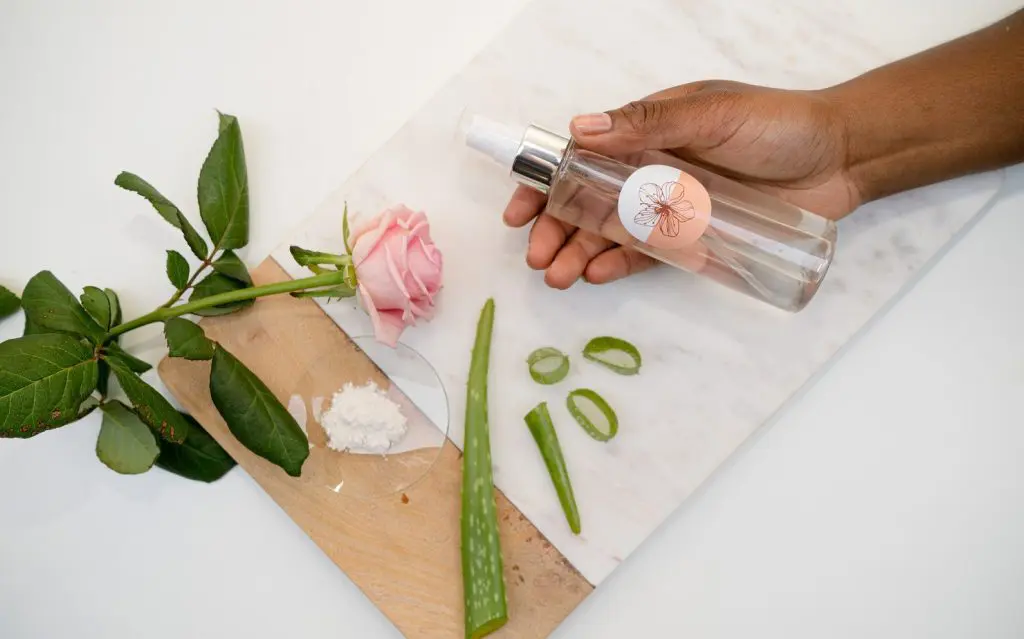We get asked all the time about how to measure the pH of skincare products – what pH is, when you need to measure it and how to measure it. Here you’ll discover the answers to these questions, as well as why we measure it and how to adjust your pH testing equipment.
What is pH?
pH is a measure on a scale of 0-14 of how acidic or alkaline something is.
A product with a pH of 7 is neutral, a pH of less than 7 is acidic, and a pH greater than 7 is alkaline. pH is only measurable where water is present, as it indicates the concentration of hydrogen ions.
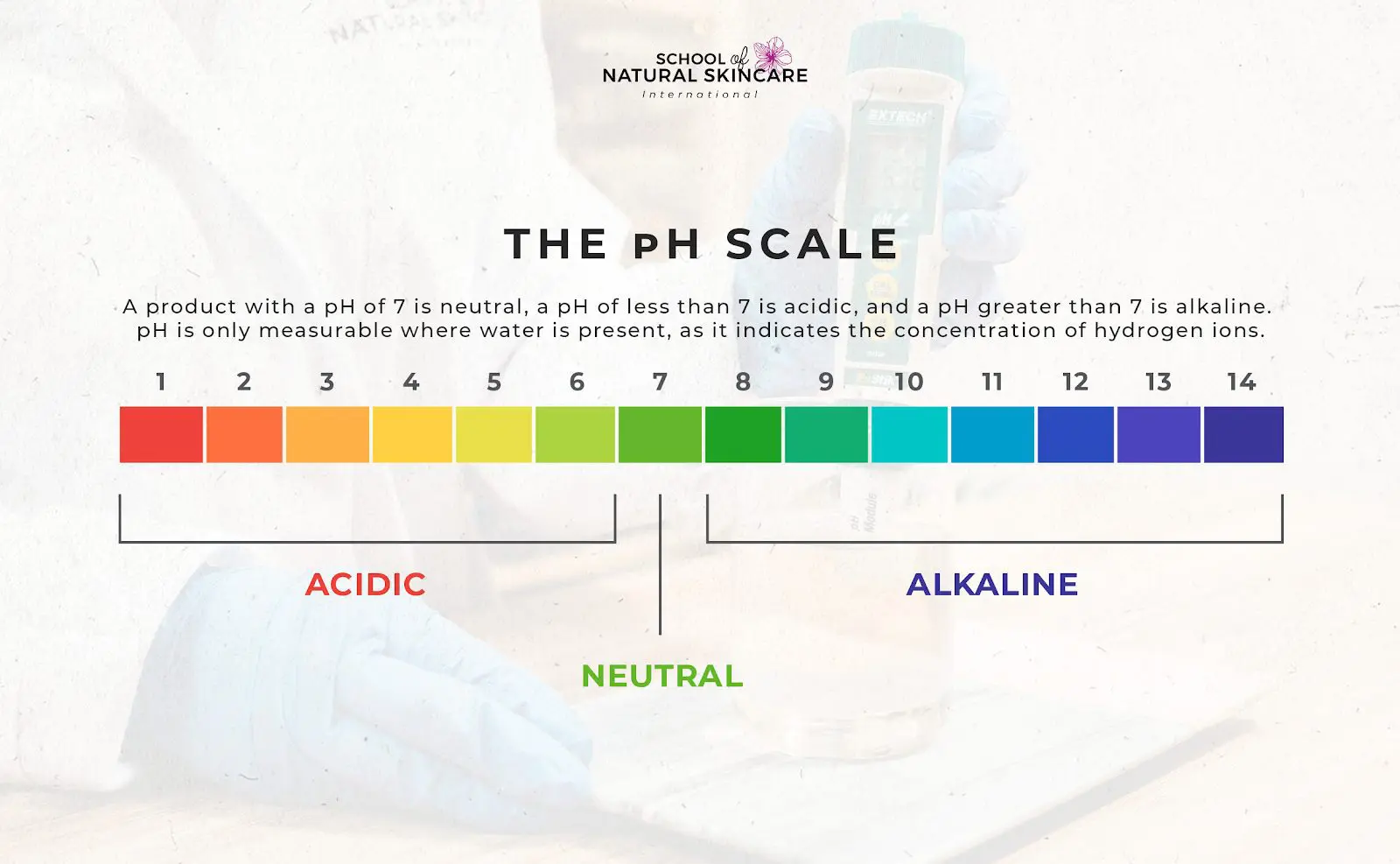
Our skin has a specific pH value, which normally averages around pH 5, and varies from one body part to another and from one person to another. It even changes during the aging process. This acidic nature plays a vital role in maintaining healthy skin.
When do you need to measure the pH of skincare products?
It is common practice to measure the pH of cosmetic products that contain water, such as skincare (creams, lotions, milks, cleansers), body care (body washes, body scrubs) and haircare preparations (shampoo, conditioner, hair masks).
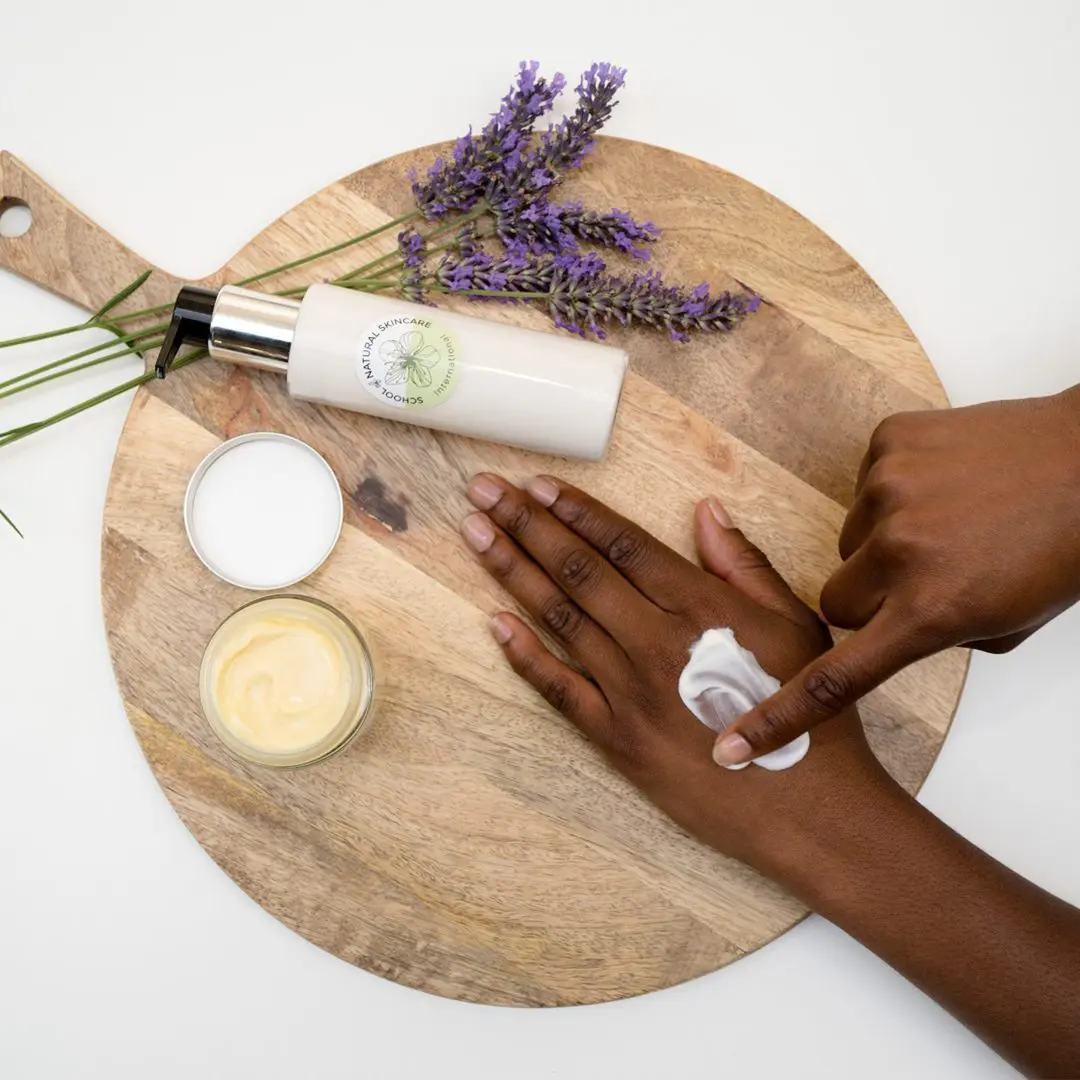
You do not need to measure the pH of anhydrous products (products that do not contain water) as a pH, by its definition, is only measured in water.
What pH should skincare products be?
We get asked this question A LOT!
Some people are convinced that skincare products should be a neutral pH (pH 7). Others think that skincare products should have the same pH as our skin (pH 4.5-5.5).
The skin’s natural pH is slightly acidic (pH 4.5-5.5), so it is a good target pH for your products, too.
However, the correct pH for your natural skincare products is determined by the ingredients in your product formula. In particular, if you are using natural preservatives, you will need to adjust the pH of your product so that it is within the optimal range for your preservative to be effective.
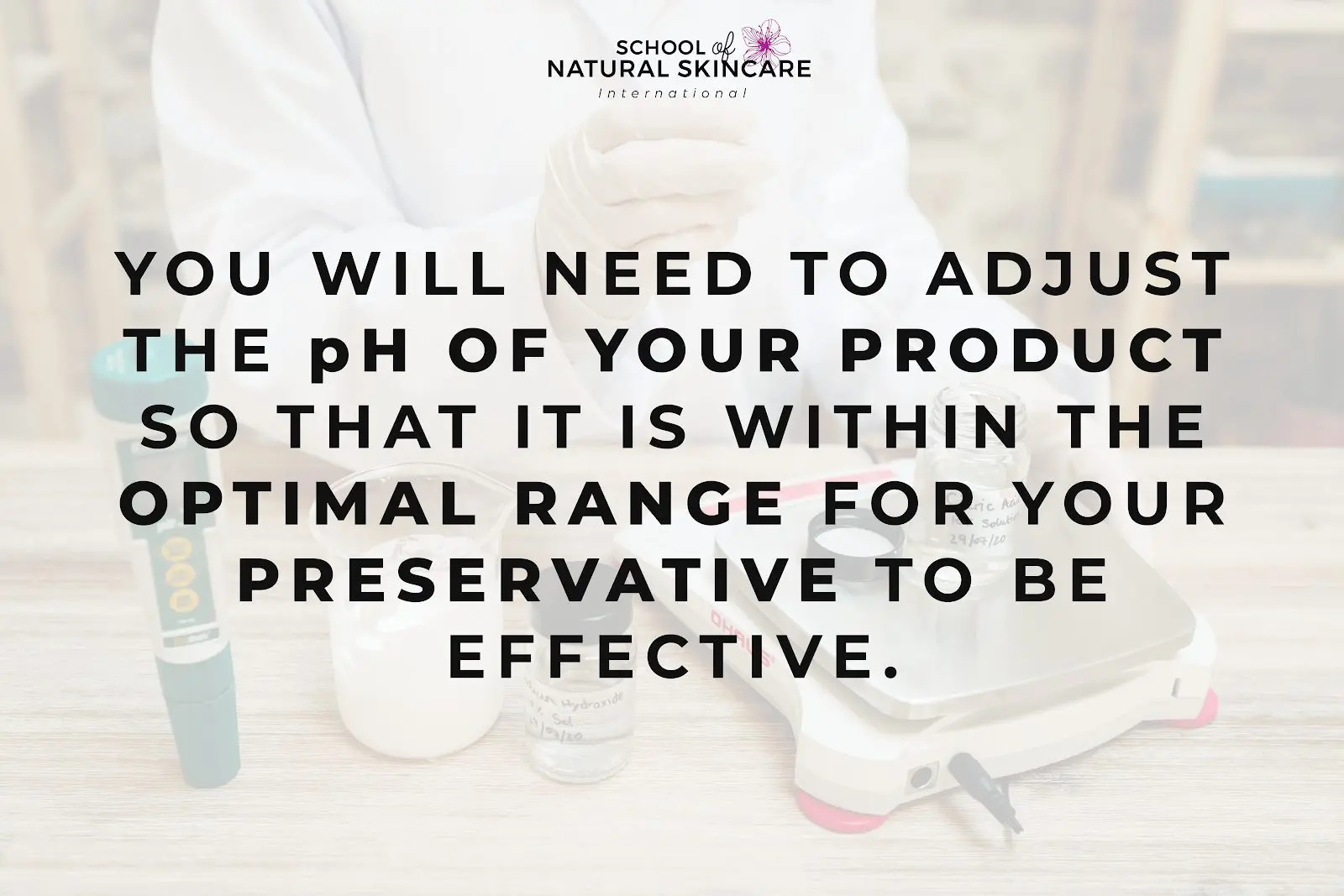
Some people worry about using a product that isn’t within the pH range of our skin. Our skin actually has a mechanism of balancing its pH; even if you wash your face with a product that has a pH of 8, the skin’s natural pH levels will be restored over time.
Why do you need to measure and adjust the pH of skincare products?
The pH of natural skincare products is very important if you are using any pH-sensitive ingredients, like naturally derived preservatives or certain active ingredients.
Almost all of the naturally derived preservatives (sodium benzoate, potassium sorbate and salicylic acid, for example) have very strict pH requirements to ensure they work properly, which means measuring (and adjusting) the pH is necessary when protecting your product with natural preservatives.
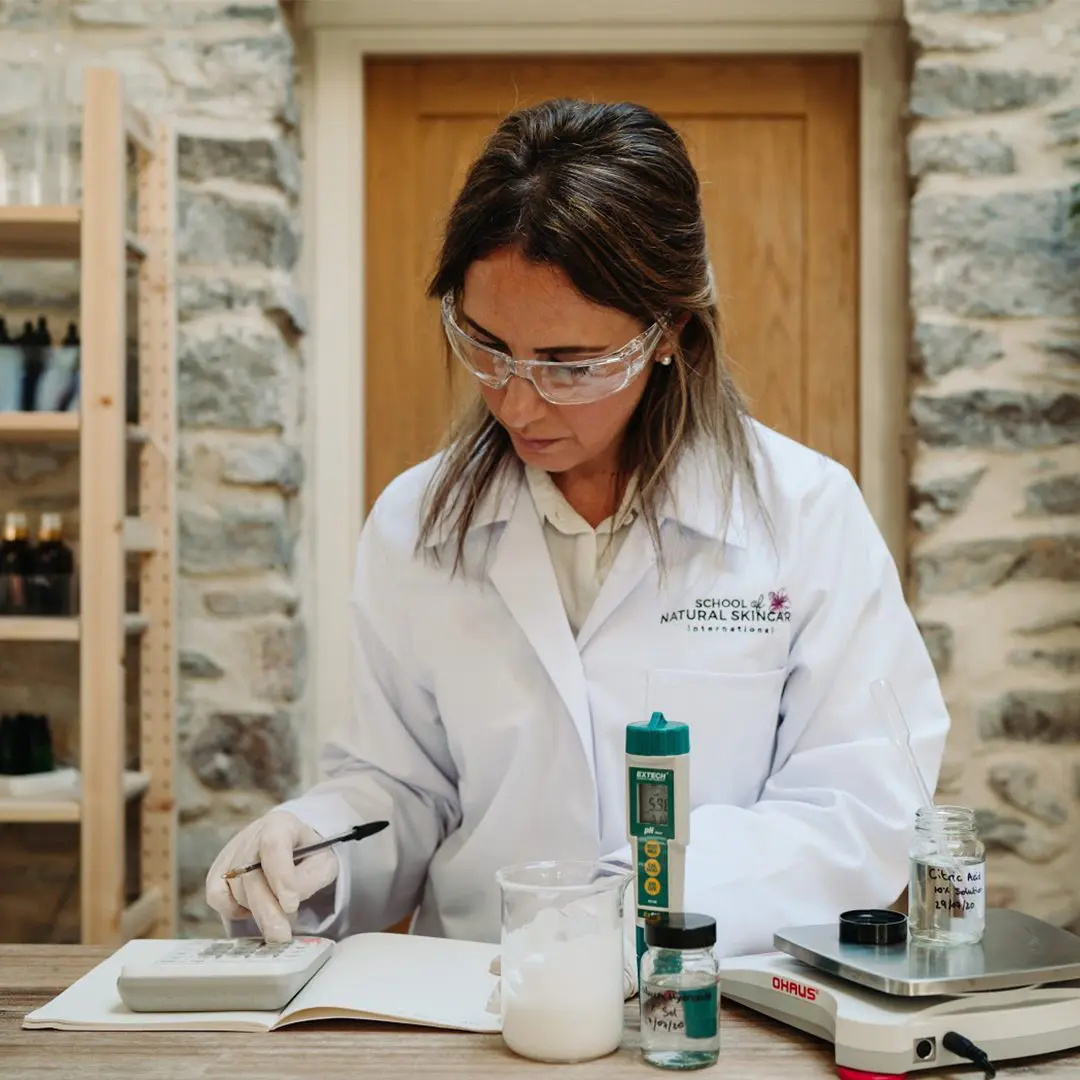
Preservatives active at a lower pH can lose their efficiency quite quickly when the pH increases; for instance potassium sorbate is active at about 70% at pH 4.5 and at about 35% at pH 5.
Check the manufacturer’s information about pH requirements for your chosen preservatives.
Most natural preservatives require a pH below 5. If you are looking to find out more about natural preservatives, take a look at our article, 3 Natural Preservatives for Cosmetics.
If you are using certain active ingredients, you will need to be aware of the pH of your product. AHAs (alpha hydroxy acids) need pH 4 or lower to be active as chemical exfoliants. Ascorbic acid (the common form of Vitamin C), requires a pH below 3.5 to be active. Niacinamide (Vitamin B3) is most stable at pH 6. Always check with your supplier of active ingredients what pH levels are needed for a specific ingredient.
What about testing and adjusting the pH of your natural haircare products?
Testing your haircare products’ pH is not the same, mainly because the pH of hair is different and the requirements for formulating haircare products are different. The good news is that we’ve written an article all about it, called Why the pH of your DiY haircare products matters (and what you can do about it!).


How do you measure the pH of skincare products?
The two options for measuring pH are pH strips and a pH meter, and there are pros and cons to each.
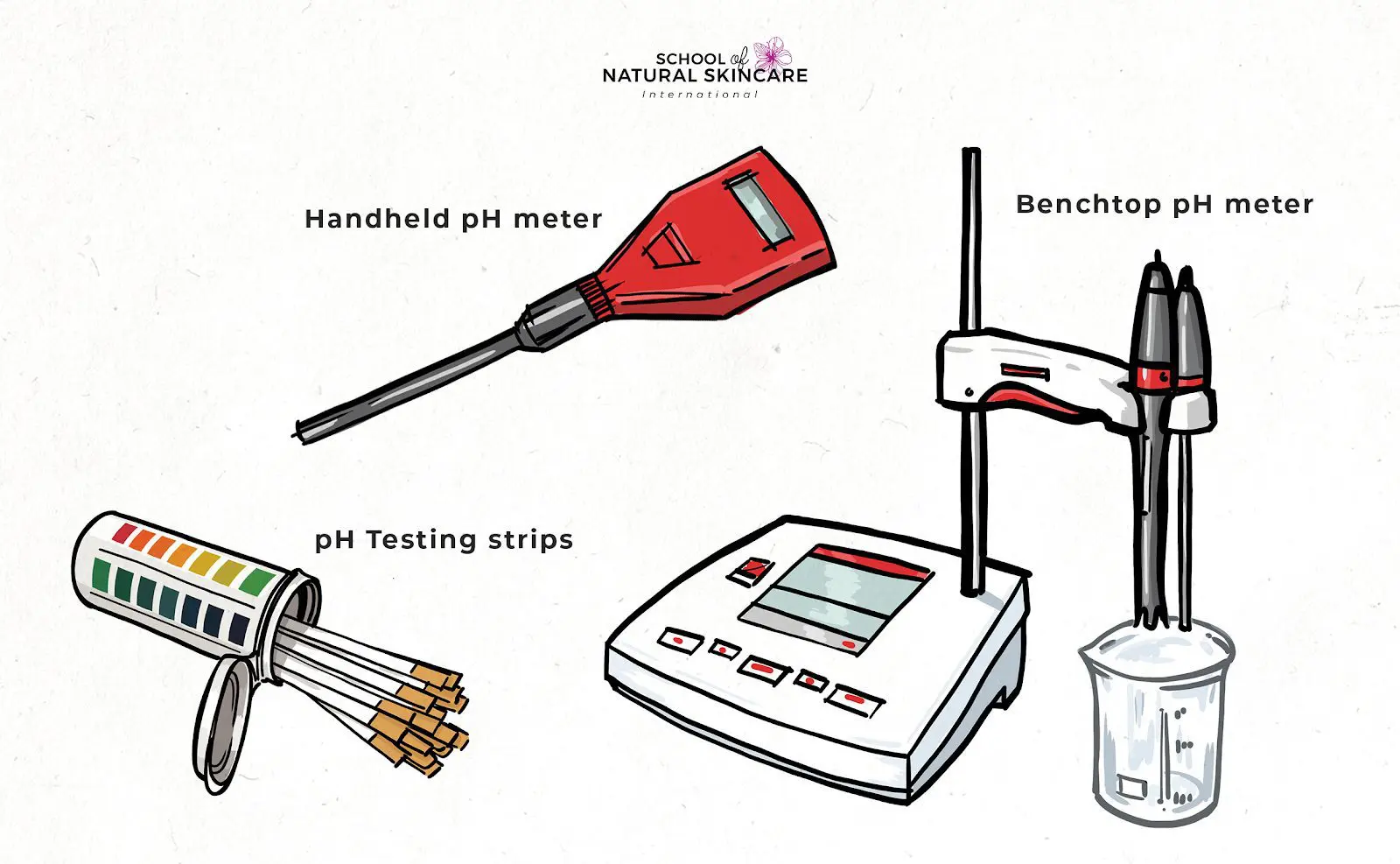
Measuring pH using pH strips
|
Advantages |
Disadvantages |
|
Inexpensive |
Not very precise, only provides a rough estimate |
|
Simple to use |
Several consequent measurements are needed to adjust the pH, so you may end up using many pH strips for one product |
|
Easily accessible | |
|
Can be used for all product types including emulsions |
Measuring pH using a pH meter
|
Advantages |
Disadvantages |
|
Gives precise measurements (to one decimal point) |
Expensive |
|
Needs regular cleaning and proper storage | |
|
Requires calibration before use | |
|
An additional emulsion probe may be needed |
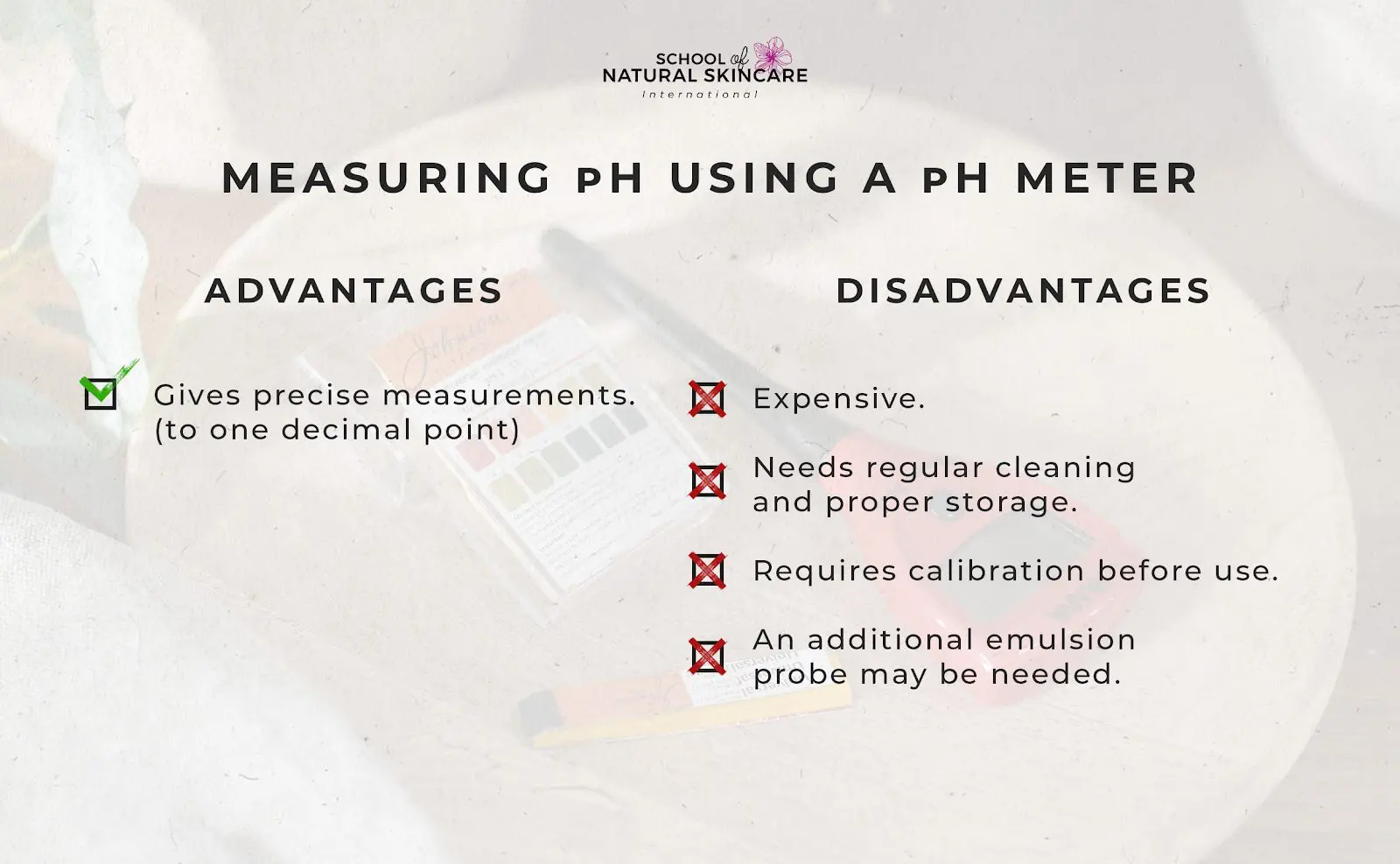
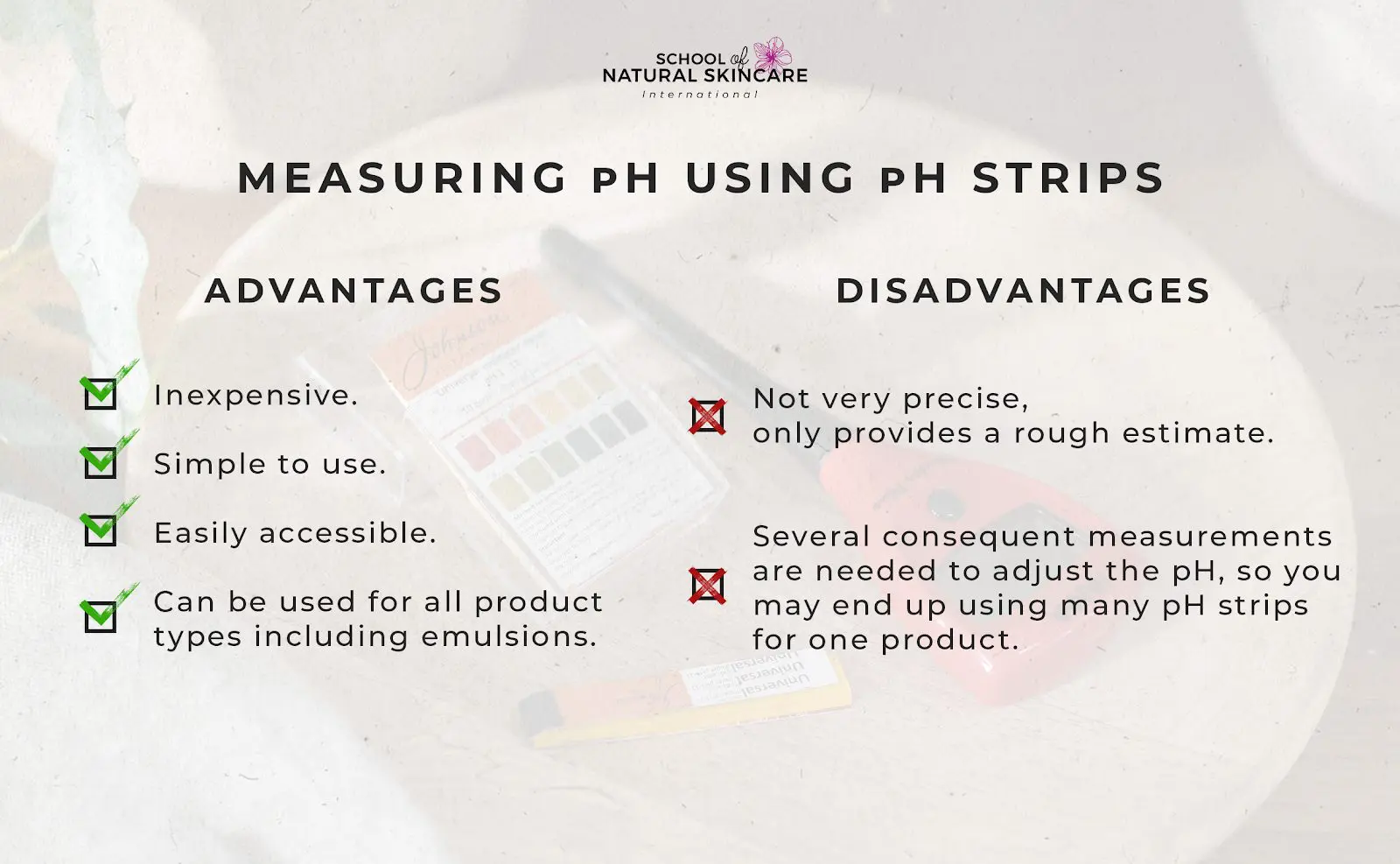
For beginners, pH strips can be a good choice, but when you want to become more professional you’ll need to learn how to use a pH meter.
If you are using natural preservatives that require a precise pH in order to be effective then it’s advisable to use a pH meter to test and adjust your pH.
If you plan to sell your natural skincare products and are sending products to a lab for microbiological testing then you’ll definitely need to measure and adjust the pH of your products very precisely, which requires a pH meter.
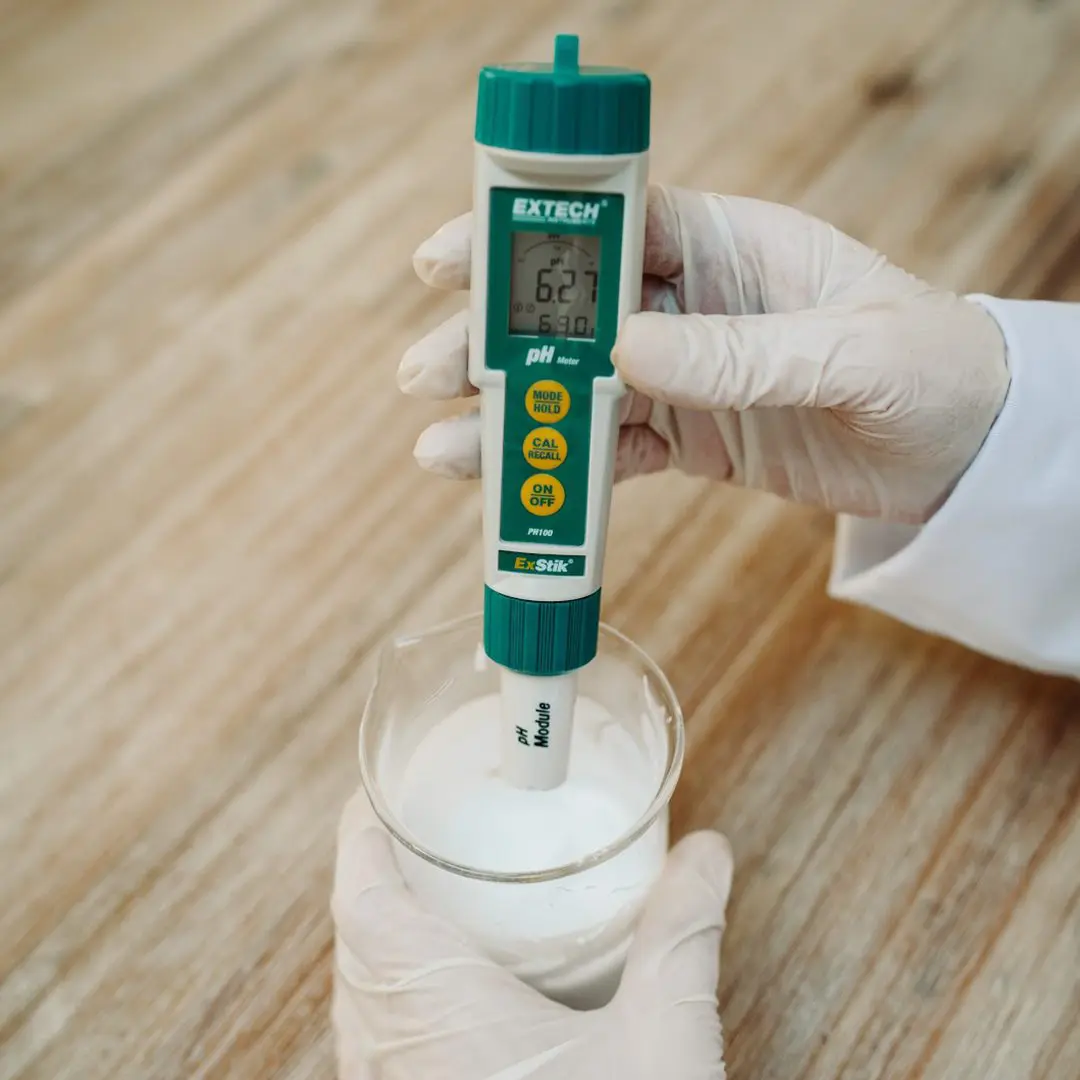
Using and caring for a pH meter
pH meters are very delicate pieces of equipment requiring special care during and after use, such as proper cleaning and storing in a special solution. They also need to be effectively calibrated prior to use to ensure they give an accurate reading.
Would you like some expert guidance on how to test and adjust the pH of your natural skincare products?
We often get asked about which pH meter to buy, how to use it and how to look after it properly.
That’s why we have a whole lesson in our Diploma in Natural Skincare Formulation that gives you suggestions of which pH meter to buy and takes you step-by-step through this process, including a video demonstration so you can see exactly what to do. We also provide a handy calibration record template (useful as part of your good manufacturing practice). In addition we have our professional skincare formulation tutors on hand to answer any questions you may have.
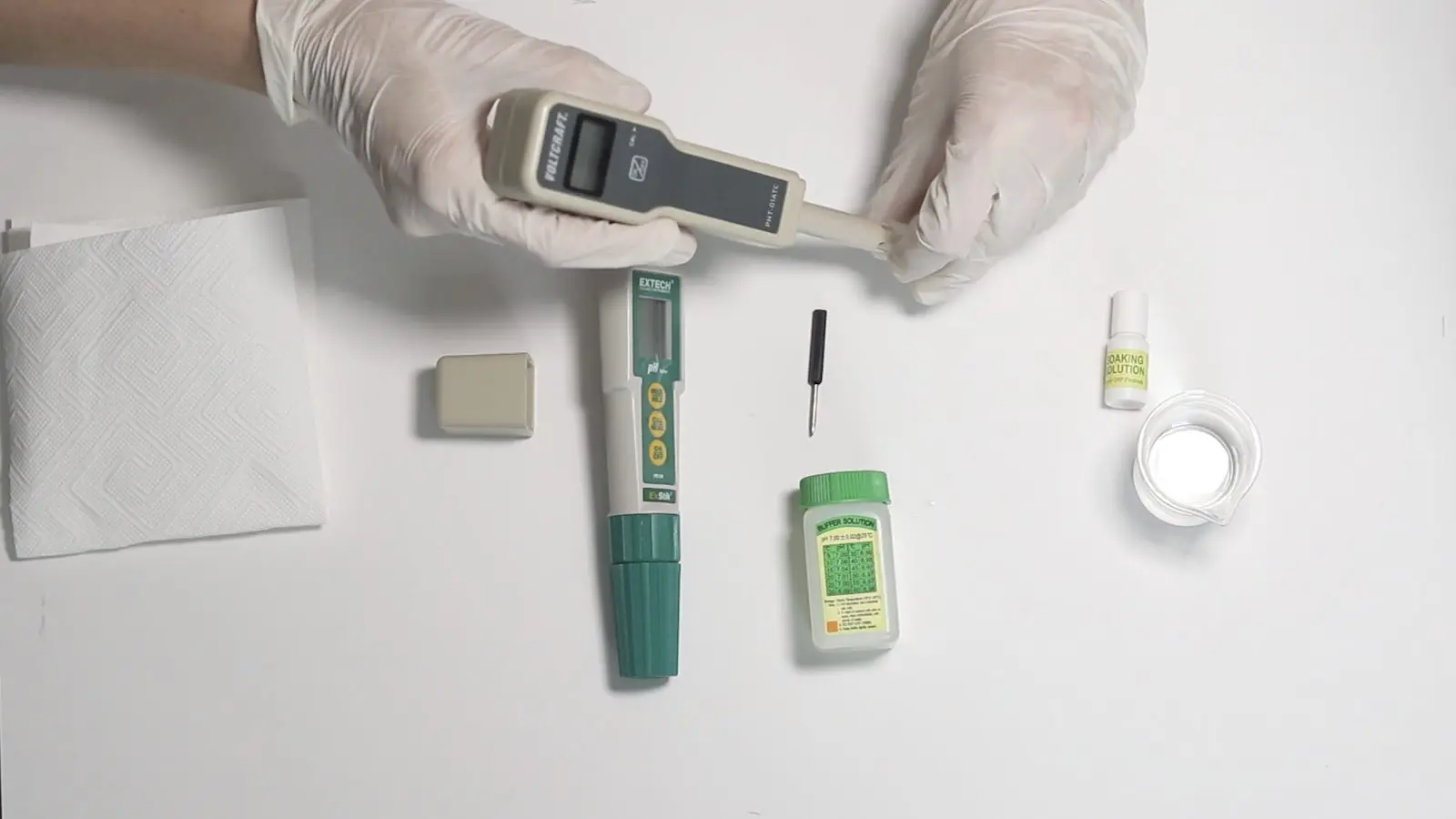
How to adjust the pH of your natural skincare products
Testing pH is just the first step; the next is to adjust it. The steps you need to follow are:
1. Create an appropriate pH adjustment solution to either increase or decrease the pH.
If you use sodium hydroxide you need to do this with a lot of care as it is extremely caustic. We have a video in our Diploma in Natural Skincare Formulation that shows you exactly how to do this safely.
2. Record the amount of the adjustment solution that you used to adjust the pH to the desired measurement.
3. After you have adjusted the pH of your product, calculate the amount of solid/pure pH adjuster used this is different to the amount of pH adjustment solution).
4. Rewrite your formula to include the pH adjuster.
In the lesson dedicated to adjusting the pH of your natural skincare products, in the Diploma in Natural Skincare Formulation, you’ll find both beautifully designed written lessons and clear, professional video demonstrations which will help you gain the confidence to do this successfully at home.
On this multimedia accredited online course, you’ll learn the practice, art and science of natural skincare formulation from start to finish. You’ll begin the process of designing the idea around your brand (if that’s what you want to do) before you create the ideas and vision for your natural skincare products. We’ll help you design everything on paper first, and walk you through the formulation and practical experimentation process.
You’ll also learn to formulate your own natural skincare products for a specific purpose, target audience, skin type or skin concern and we’ll help you ensure your products are a match to your value system! Vegan, organic, natural, sustainable, ethical, fairtrade, package free… We’ve got you covered!
If you want to create a range of skincare products that are a cut above the rest, you will need to be able to deliberately select the right ingredients to get the result you seek, organise them in the right percentages to give you the consistency, viscosity and quality you want and know how to ensure your masterpieces are safe, stable and effective. That is what studying the Diploma in Natural Skincare Formulation will help you to do – and more!
To get you started with formulating your own natural skincare products, you can always have a look at our amazing Beginner’s Guide to Formulating Natural Skincare Products. It won’t teach you everything you need to know, but it will get you up and running.
Free Guide
The Beginner's Guide to Formulating Natural Skincare Products (From scratch, like a professional!)
Start creating your own natural skincare products from scratch – rather than simply following recipes!
Learn how to formulate like a pro and discover our top tips for becoming a confident skincare formulator.
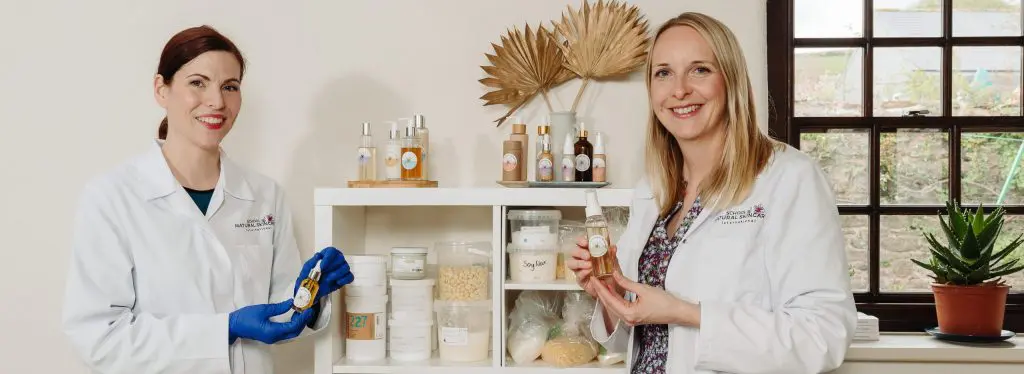
Exclusive for our newsletter subscribers. Sign up now.
We look after your data in accordance with our privacy policy.
Download this fabulous guide and you’ll learn:
- What formulating is and why you need to be doing it!
- The difference between following recipes and formulating your own products.
- Our step-by-step process to designing products people love.
- Four easy ways to personalize your skincare products.
- Choosing the right carrier oils for your beauty products.
- Plus, you’ll get our Safe Product Checklist: How to make sure the skincare products you make are safe and stable
Loved learning about pH? Make sure to pin this article to remember!
